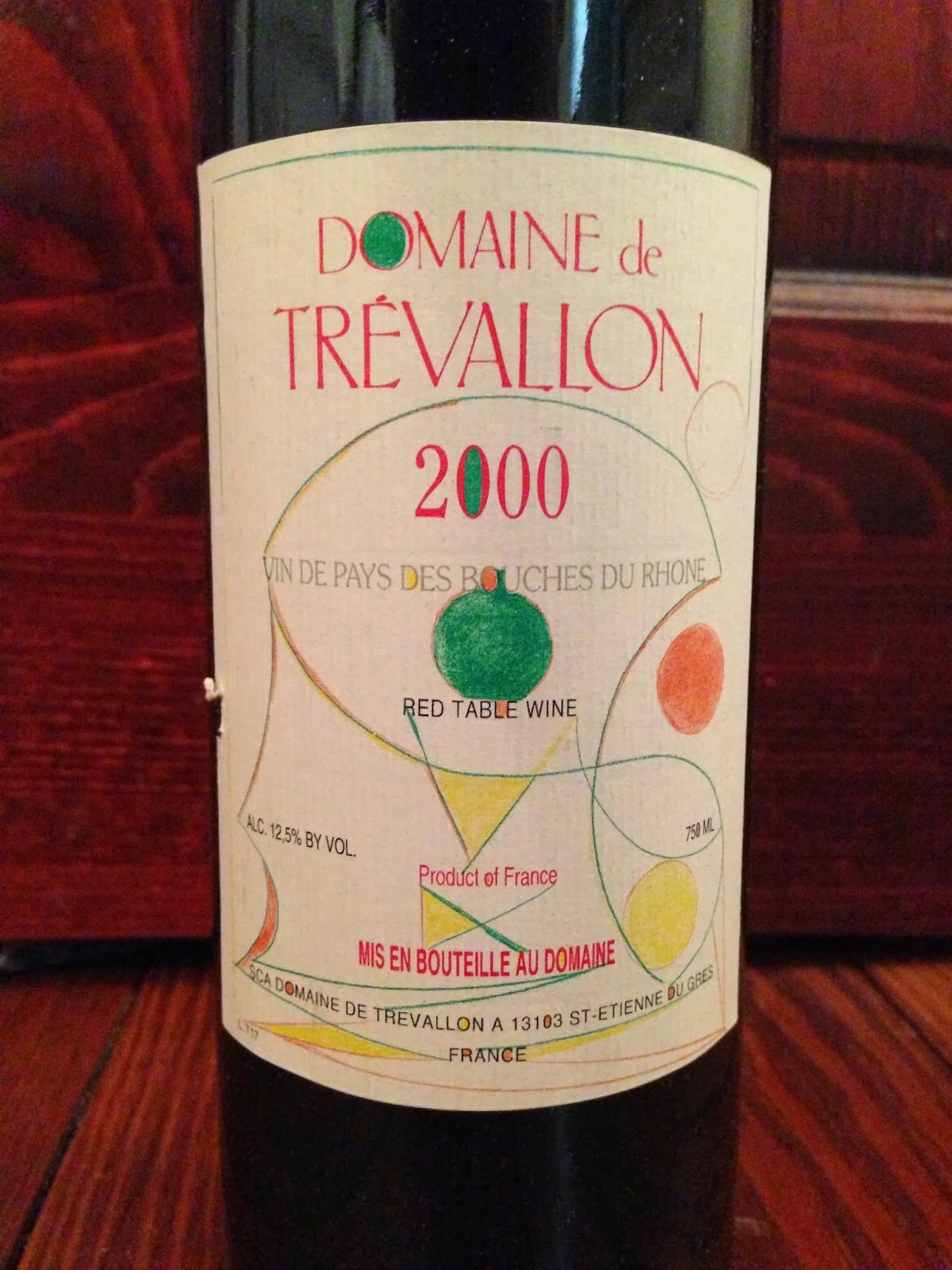I should also mention before getting into the blog post that Champagne Taste turned 3 years old this month! Thanks for reading my wine ramblings (and also my food ramblings via Champagne Taste’s younger sibling, Here, Taste This!). It’s been fun sharing my tasting notes and more recently my wine philosophy and thoughts with you.

Anyway, I think that telling you about the experience with Trevallon might help you understand the other thing I’ll touch on - my “strange” wine descriptors.
So about the Trevallon - big reds from Provence (often made from Mourvedre if it’s from Bandol, like Tempier) can be a little too much on the palate if they’re opened too young. It’s why I like holding the bottles quite some time. Trevallon is a little different - it’s about 50/50 Cabernet Sauvignon and Syrah. But it needs to be enjoyed once it’s been waiting a little while in the bottle. So I happened upon some vintage 2000 and bought it, and opened it this past weekend. It’s still quite a big wine but it’s softened and on the elegant side now - clean and lovely. It’s still a dark red in the glass but with a brickish rim to show its age a bit, and the aromas and flavors were fascinating - plenty of red fruit (and a touch of dark fruit) including red plum skin and wild berry, autumn baking spices, savory herbs, dried petals, olive, and (drumroll please) pastrami sandwich. Yes, I said it. Why pastrami? Well, it had the ground black pepper notes of the Syrah that you find with pastrami, the seeds in the rye bread with the savory yet somewhat baking spice sort of thing, and the salty almost briny meat. (I even told my boyfriend as we drank it, it reminds me of pastrami, and fortunately for me, he didn’t tell me I was completely crazy.) The wine is elegant and soft at this age, with a lovely finish. It still has a warmth about it, but it’s nicely balanced. I can honestly say that it pays to be patient with your wines, and the ones that need to age a while - well, let them age as long as they need to.
And now, regarding strange descriptors for wine...apparently I’m a bit notorious with this. I come up with tasting notes that surprise even industry veterans (perhaps you’ve heard my story about the nosebleeds that plague me, and how I’m sometimes turned off by a Rioja that has too much iron minerality toward its finish because of the sanguine characteristic?) - anyway the Trevallon reminded me a bit of a pastrami sandwich. It’s ok to let the wines speak to you and remind you of just about anything you’ve smelled or tasted at some point - it’ll help you understand the characteristics of the grapes and the soils and climates. So whatever you smell or taste, take note of it, no matter now peculiar it may seem. (And I’m also a believer in assigning personalities to the wines, but that’s another story!)


